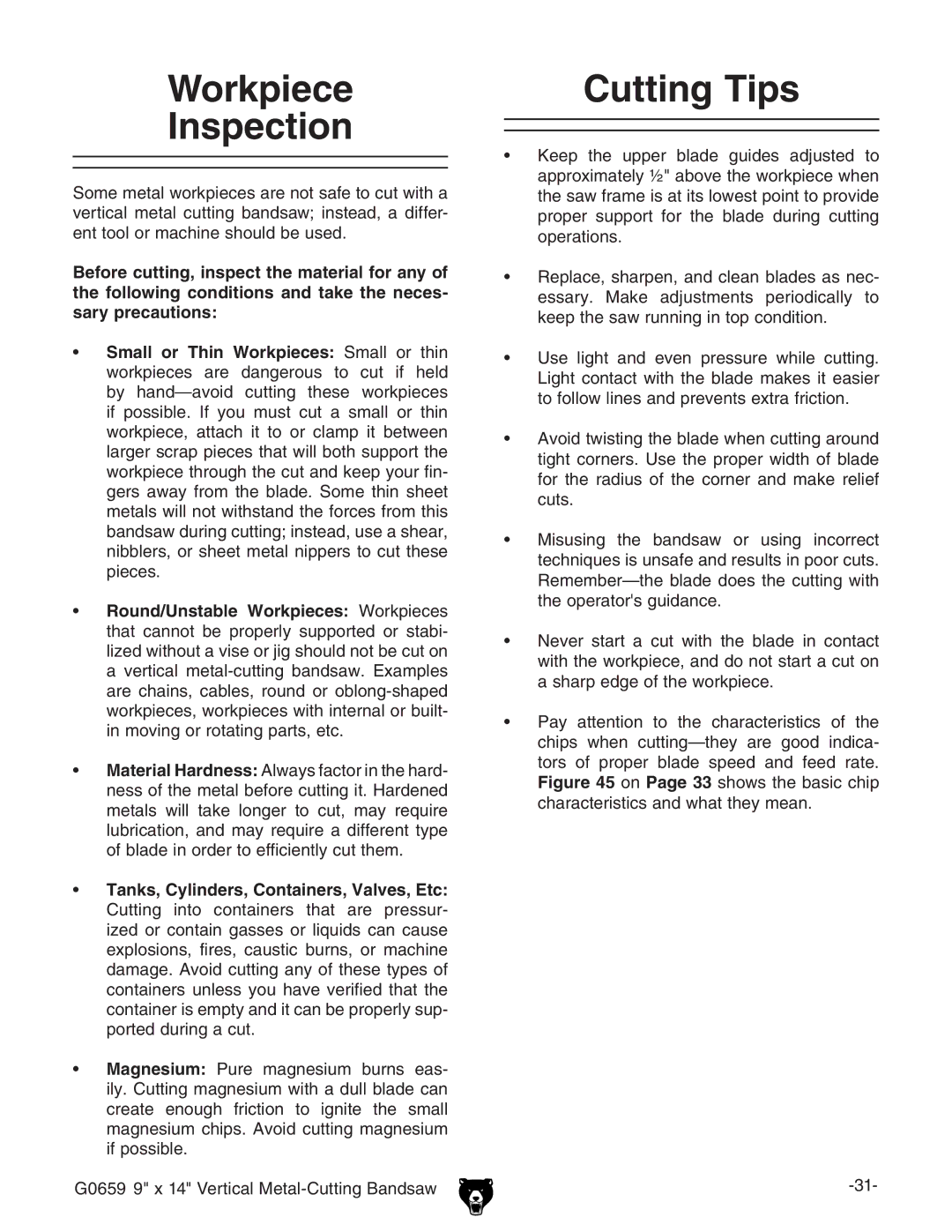
Workpiece
Inspection
Some metal workpieces are not safe to cut with a vertical metal cutting bandsaw; instead, a differ- ent tool or machine should be used.
Before cutting, inspect the material for any of the following conditions and take the neces- sary precautions:
•Small or Thin Workpieces: Small or thin workpieces are dangerous to cut if held by
•Round/Unstable Workpieces: Workpieces that cannot be properly supported or stabi- lized without a vise or jig should not be cut on a vertical
•Material Hardness: Always factor in the hard- ness of the metal before cutting it. Hardened metals will take longer to cut, may require lubrication, and may require a different type of blade in order to efficiently cut them.
•Tanks, Cylinders, Containers, Valves, Etc:
Cutting into containers that are pressur- ized or contain gasses or liquids can cause explosions, fires, caustic burns, or machine damage. Avoid cutting any of these types of containers unless you have verified that the container is empty and it can be properly sup- ported during a cut.
•Magnesium: Pure magnesium burns eas- ily. Cutting magnesium with a dull blade can create enough friction to ignite the small magnesium chips. Avoid cutting magnesium if possible.
G0659 9" x 14" Vertical
Cutting Tips
•Keep the upper blade guides adjusted to approximately ½" above the workpiece when the saw frame is at its lowest point to provide proper support for the blade during cutting operations.
•Replace, sharpen, and clean blades as nec- essary. Make adjustments periodically to keep the saw running in top condition.
•Use light and even pressure while cutting. Light contact with the blade makes it easier to follow lines and prevents extra friction.
•Avoid twisting the blade when cutting around tight corners. Use the proper width of blade for the radius of the corner and make relief cuts.
•Misusing the bandsaw or using incorrect techniques is unsafe and results in poor cuts.
•Never start a cut with the blade in contact with the workpiece, and do not start a cut on a sharp edge of the workpiece.
•Pay attention to the characteristics of the chips when
